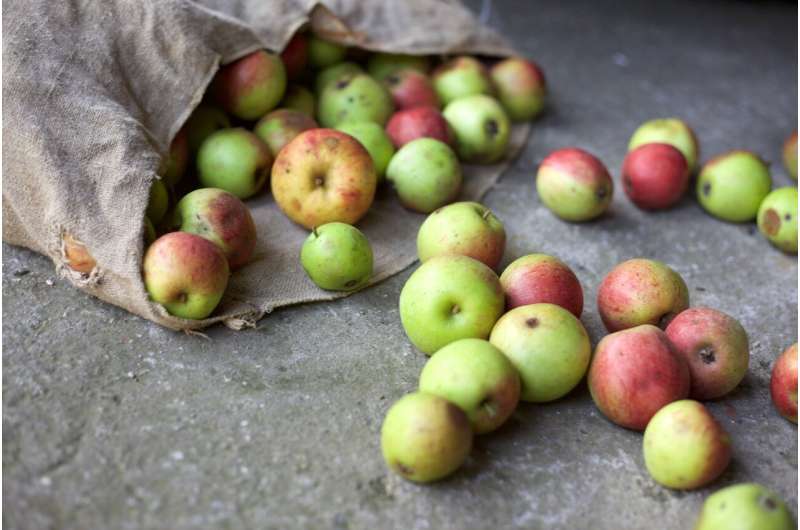Valorizing into urban biowaste locally: Conclusive results of the European DECISIVE project

Biowaste, food waste and other natural biodegradable refuse make up a third of French household waste. This biodegradable waste is a potential source of energy for producing electricity and heat but can also provide a wealth of products with high added value for farmers. While all households are expected to be able to sort biowaste at the source by late 2023, the European multidisciplinary project DECISIVE has focused on developing micro-scale anaerobic digestion (AD) in urban areas.
Coordinated by INRAE, this program, launched in 2016 with 14 partners in France, Germany, Spain, Italy, Belgium and Denmark, has led to full-scale testing of efficient micro-AD units at local level, capable of producing both energy for local use and a biopesticide for farms. From an environmental and socio-economic standpoint, the results of the project, which will draw to a close in late October 2021, brings the prospect of a concrete roll-out of a circular system within reach.
As more and more people move to urban areas, bringing ever-greater needs for energy and taking an increasing toll on the environment, biowaste looks like an attractive resource whose management must be incorporated into the sustainable development of territories. That is why partners in the European project DECISIVE have developed appropriate technology for reaping all the benefits of biowaste and run full-scale tests of a micro-AD plant at territorial level.
Proven robust technology, local energy, and a biopesticide to boot
Several micro-AD processes (supplied by two different manufacturers) with biogas recovered by Sterling engines have been tested over several years. The DECISIVE consortium, notably through INRAE's lab in Rennes, has also developed a new micro-AD process that consumes less energy. This new process consists of two phases: first, a solid biowaste is introduced into a cylinder that acts as a piston, where the waste breaks down thanks to a recirculating liquid called leachate. The products from the disintegration extracted by the leachate are then transformed into biogas in an adjacent tank. When the cylinder is removed, a solid residue, digestate, is retrieved that can be post-treated and re-used. The DECISIVE project tested fermentation on solid substrate in Spain with a view to manufacturing a biopesticide.
When it comes to nutrients, the consortium showed that biowaste, which has high methane-generating potential, helps produce a digestate that contains mineral nitrogen that can be used in fertilizers. However, research still needs to be carried out on returning the digestate to the soils, because while the biowaste is treated before undergoing methanization, reusing animal residue from food waste requires strict supervision for health reasons. What happens to pathogens in biowaste management networks is therefore a major subject of study.
An unprecedented full-scale test in a dense urban area
After three years of assessing local biowaste flows and research into the most appropriate technology for their recovery, a pilot demonstration site was set up in Ecully in the greater Lyon region in November 2019. The micro-AD unit, built by a French-Chinese company and surmounted by a solar panel, was designed to recycle a minimum of 50 tons of biowaste per year—or about one ton per week—to close the energy loop. It was designed to produce biogas, 80% of which was used to heat the unit and provide hot water needed for purifying, and 20% of which was used to generate electricity for an urban farm. This unprecedented pilot site in a dense urban setting was planned to be fuelled mainly by biowaste from the restaurant and catering sector (collective catering, traditional restaurants, and waste from neighboring retail premises). In the urban farm, the goal was initially to recover biowaste collected within a radius of 5km, and the site was sized to produce 20m3 of biogas per day and 1 to 2 kWh in cogeneration, and to deposit the digestate into nearby fields. Despite the pandemic, which slowed down waste collection, 4.3kg of organic material per m3 of reactor was recovered thanks to the micro-AD unit, producing 15m3 of biogas per day.
The concept of decentralized organization tried, tested and true
From a technological point of view, the installation of a micro-AD unit in a dense urban space has proved efficient, even attracting new players. The organization of a short circuit of recycled organic material also ultimately demonstrates the potential for creating jobs. The technology, which can easily be replicated, has also proven to be adaptable since it can be transported as needed. The micro-AD unit at Ecully is now set up in Narbonne, and a new site in Italy capable of treating up to 400 tons of waste per year is currently being installed in a mountainous zone.
A study carried out by a German partner is looking into how dedicated people are to sorting biowaste in their homes. The results of this sociological study in households of varying socio-economic profiles will help fine-tune policies related to managing waste at the source.
Beyond technological processes, the success of such decentralized waste management programs requires the commitment of local players (local authorities, restaurant owners and caterers, suppliers, farmers, etc.) and the cooperation of ordinary citizens.
More information: Conference/presentations: www.decisive2020.eu/news-item/ … ts-main-conclusions/
Provided by INRAE - National Research Institute for Agriculture, Food and Environment




















